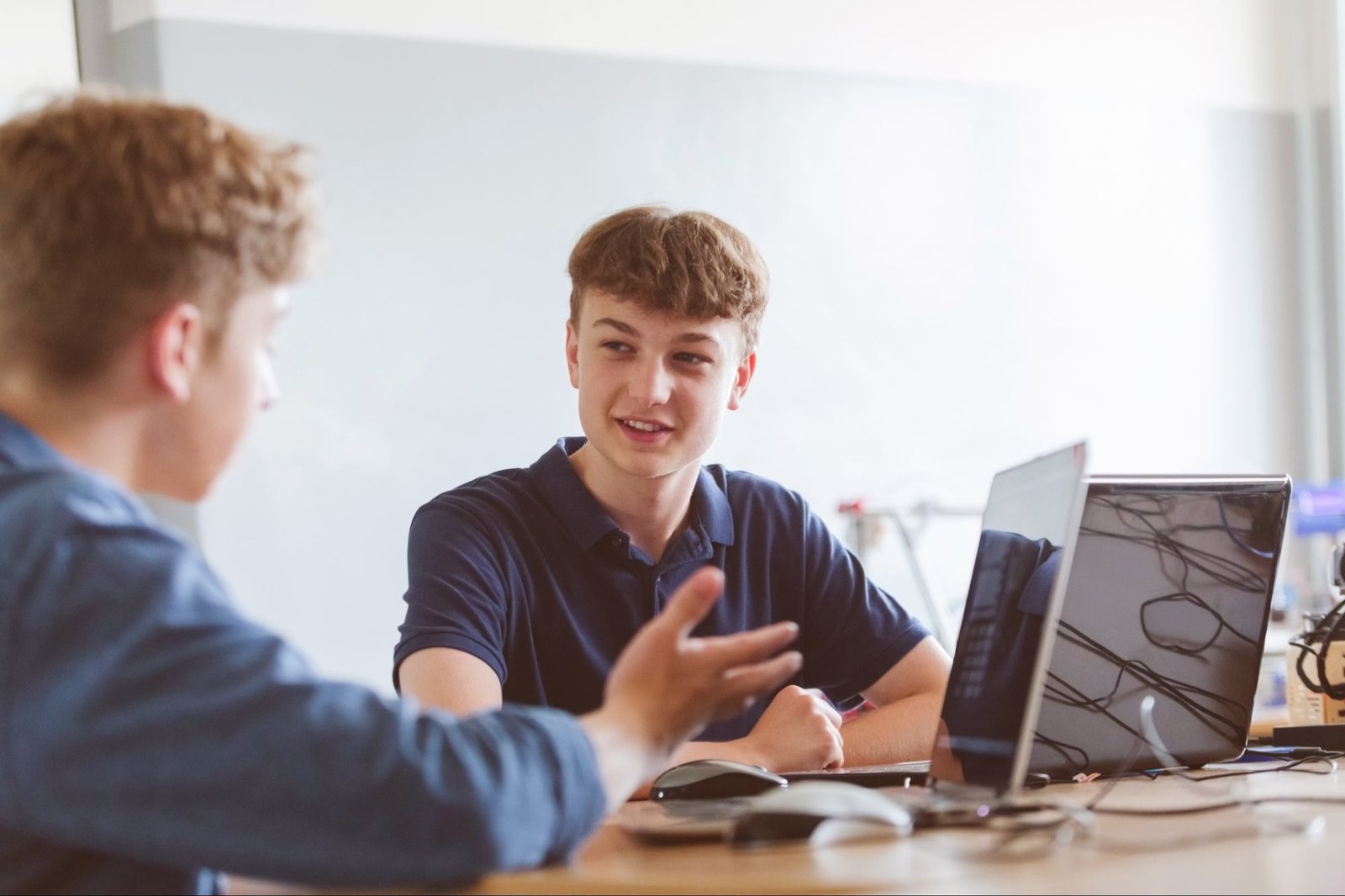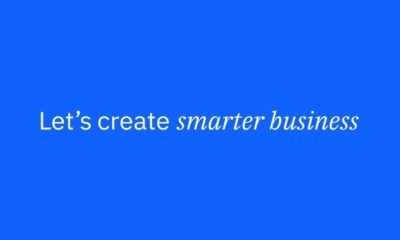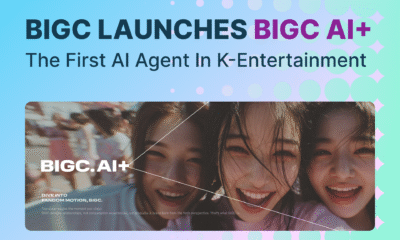Education
Kyndryl Signs White House Pledge to Invest in and Advance AI Education for America's Youth – WV News

Education
SC Department of Education to implement AI, new cybersecurity protocols – WLTX
Education
Florida Virtual School rolls out AI course to strengthen student math skills

Florida Virtual School is using artificial intelligence to strengthen its students’ math skills.
More than 80 students from sixth to eleventh grade were the first to participate in the online school’s “AI in Math” enrichment program.
The online school says students were able to learn AI concepts and boost AI literacy by using algebra-based activities.
The 10-hour course was developed by the University of Florida and the education research group Concord Consortium. FLVS students currently taking Algebra 1 Segment 1 can sign up for the program and earn a certificate from UF.
READ MORE: AI in schools: Miami-Dade set to develop ethical guidelines for students, teachers
This is a News In Brief report. Visit WLRN News for in-depth reporting from South Florida and Florida news.
Copyright 2025 WLRN Public Media
Education
How AI Is Turning Hugh School Students Into Entrepreneurs

Opinions expressed by Entrepreneur contributors are their own.
This is the third installment in the “1,000 Days of AI” series. I’ve had a front-row seat to K-12 education’s transformation — working with school systems worldwide as an AI education consultant to develop school district AI strategies and watching something remarkable unfold. The change didn’t come from curriculum committees or federal mandates, but from students who, as always, refused to wait for permission.
While educators debated whether ChatGPT constituted cheating, 17-year-old high schooler Zach Yadegari built an AI app generating $1.12 million in monthly revenue. He began coding at age seven, initially creating a gaming website to bypass his elementary school’s firewalls. By 16, he’d already sold his first company for $100,000.
Related: How AI Is Transforming Education Forever — and What It Means for the Next Generation of Thinkers
The stark reality: AI has already changed everything
Within 1,000 days, ChatGPT has fundamentally challenged traditional K-12 education. According to ACT research, 70% of high school students used AI tools in 2023-24, up from 58% the previous year. Pew Research confirms ChatGPT usage for schoolwork doubled from 2023 to 2024. But these statistics miss the real story: Students aren’t just using AI to complete assignments — they’re using it to build businesses, forcing schools to rapidly develop AI policies that balance innovation with responsible AI use in education.
The traditional model assumed knowledge was scarce and teachers were gatekeepers. AI shattered both assumptions overnight. Every student now has access to infinite tutoring, instant expertise and tools that turn ideas into products in hours, not years. The question isn’t whether students should learn entrepreneurship — they already are.
From high school hallways to revenue streams
The most successful young entrepreneurs started as intrapreneurs within the school system itself. High school students across the country are transforming their AI skills into real businesses. Students nationwide are selling AI-generated study guides to classmates for $50-$500 monthly.
The irony isn’t lost on me: What adults call cheating, these students call market research. What teachers label shortcuts, investors recognize as minimum viable products. In my work helping districts with developing AI policy for schools, I’ve seen how these entrepreneurial students actually exemplify AI education best practices — they’re solving real problems with real tools.
The intrapreneurs inside our schools
Not all innovation happens outside school walls. Student intrapreneurs are creating AI tutoring programs for struggling peers, building attendance apps for their schools and developing mental health chatbots for counselors. They see school problems as product opportunities, transforming education while living it.
Teachers are becoming intrapreneurs, too. Forward-thinking educators use AI to create personalized learning paths, automate grading to spend more time with students and build tools that spread district-wide. These educator-intrapreneurs bridge institutional requirements and student innovation, creating space for experimentation within existing structures while contributing to AI curriculum development for K-12.
Related: Why We Shouldn’t Fear AI in Education (and How to Use It Effectively)
The federal framework meets grassroots reality
In April 2025, President Trump signed “Advancing Artificial Intelligence Education for American Youth,” establishing the White House Task Force on AI Education. The executive order creates the Presidential AI Challenge to “encourage and highlight student and educator achievements in AI” across multiple age categories. This isn’t just another science fair — it’s federal recognition that K-12 students are already AI practitioners, validating the school district AI strategies that forward-thinking administrators have been developing.
Crucially, the Presidential AI Challenge calls for students to “use AI to address community challenges,” validating what student entrepreneurs have been doing all along. The framework emphasizes that AI education must “spark curiosity and creativity,” but students aren’t preparing to participate — they’re already leading. This federal backing provides the cover innovative schools need to transform detention into incubation and homework into hackathons, establishing new AI education best practices along the way.
3 practical steps for schools right now
1. Implement “innovation hours” aligned with the Presidential AI Challenge:
Dedicate weekly time for students to work on AI projects addressing real community problems. Let students form ventures, not just groups. Let them pursue customers, not just grades. Schools implementing this now will have students ready when the Presidential AI Challenge launches. This approach to AI curriculum development for K-12 turns theory into practice.
2. Transform detention into incubation:
Every student “caught” using AI creatively should be redirected, not punished. Create an “AI Innovation Council” where rule-benders become rule-makers. Have them develop your school’s AI policy and teach AI literacy to younger students. The White House Task Force calls for student-educator collaboration — make your “problem students” your problem solvers. This is responsible AI use in education at its best.
3. Create intrapreneurship pathways:
Establish formal recognition for students improving school operations through AI. Give course credit for building tools the school actually uses. Partner with local businesses for real-world projects. Every pizza shop and dental office needs AI help. Your students can provide it while earning money and credits. These pathways should be central to any school district AI strategy.
The next 1,000 days: Bigger challenges, bigger opportunities
The first 1,000 days proved that students could use AI. The next 1,000 days will prove they can lead with it. As AI becomes more powerful, the gap between students with access and support versus those without will widen exponentially. A student with ChatGPT, supportive teachers and entrepreneurial parents will build companies. A student with restricted access and punitive policies will fall behind — not by years, but by generations.
The mental health implications are staggering. When 14-year-olds can build million-dollar businesses, what happens to those who can’t? When AI can do homework in seconds, how do we measure learning? These aren’t distant philosophical questions; they’re immediate challenges requiring thoughtful approaches to developing AI policy for schools.
The next 1,000 days will see AI-native students enter the workforce. I can’t wait to see how they reshape entire industries. The concept of “entry-level” will dissolve when teenagers arrive with more AI experience than senior executives.
The entrepreneurial imperative
Schools that thrive won’t be those with the best AI policies or detection tools. They’ll be those cultivating intrapreneurs — students and teachers who transform systems from within. Every student who builds a tool to help classmates is an intrapreneur. Every teacher experimenting with AI to improve outcomes is an intrapreneur. Every administrator creating space for innovation enables intrapreneurship.
After 1,000 days of ChatGPT in K-12 education, one truth emerges: Students who embraced AI as a tool for creation rather than completion are building the future economy. They’re intrapreneurs transforming schools from within and entrepreneurs building alternatives from without.
The next 1,000 days will be exponentially more complex. AI will become more powerful, accessible and essential. Students who start building now will have compounded advantages. For educators, parents and policymakers seeking guidance from an AI keynote speaker for education or looking to establish AI education best practices, the path forward is clear: Embrace intrapreneurship, enable entrepreneurship, and expect transformation. The federal government has provided the framework through the Presidential AI Challenge. Now it’s time for local action.
The kids aren’t just alright — they’re already ahead. The question for the next 1,000 days isn’t whether students will use AI to transform education and the economy. They will. The question is whether we’ll help them build something better or watch them build around us.
Coming next in the “1,000 Days of AI” series: Legal’s AI transformation — where precedent meets algorithms, and why your next lawyer might be an AI that passed the bar exam on its first try.
-

 Business5 days ago
Business5 days agoThe Guardian view on Trump and the Fed: independence is no substitute for accountability | Editorial
-
Tools & Platforms3 weeks ago
Building Trust in Military AI Starts with Opening the Black Box – War on the Rocks
-

 Ethics & Policy1 month ago
Ethics & Policy1 month agoSDAIA Supports Saudi Arabia’s Leadership in Shaping Global AI Ethics, Policy, and Research – وكالة الأنباء السعودية
-

 Events & Conferences4 months ago
Events & Conferences4 months agoJourney to 1000 models: Scaling Instagram’s recommendation system
-

 Jobs & Careers2 months ago
Jobs & Careers2 months agoMumbai-based Perplexity Alternative Has 60k+ Users Without Funding
-

 Education2 months ago
Education2 months agoVEX Robotics launches AI-powered classroom robotics system
-

 Funding & Business2 months ago
Funding & Business2 months agoKayak and Expedia race to build AI travel agents that turn social posts into itineraries
-

 Podcasts & Talks2 months ago
Podcasts & Talks2 months agoHappy 4th of July! 🎆 Made with Veo 3 in Gemini
-

 Podcasts & Talks2 months ago
Podcasts & Talks2 months agoOpenAI 🤝 @teamganassi
-

 Education2 months ago
Education2 months agoAERDF highlights the latest PreK-12 discoveries and inventions




















